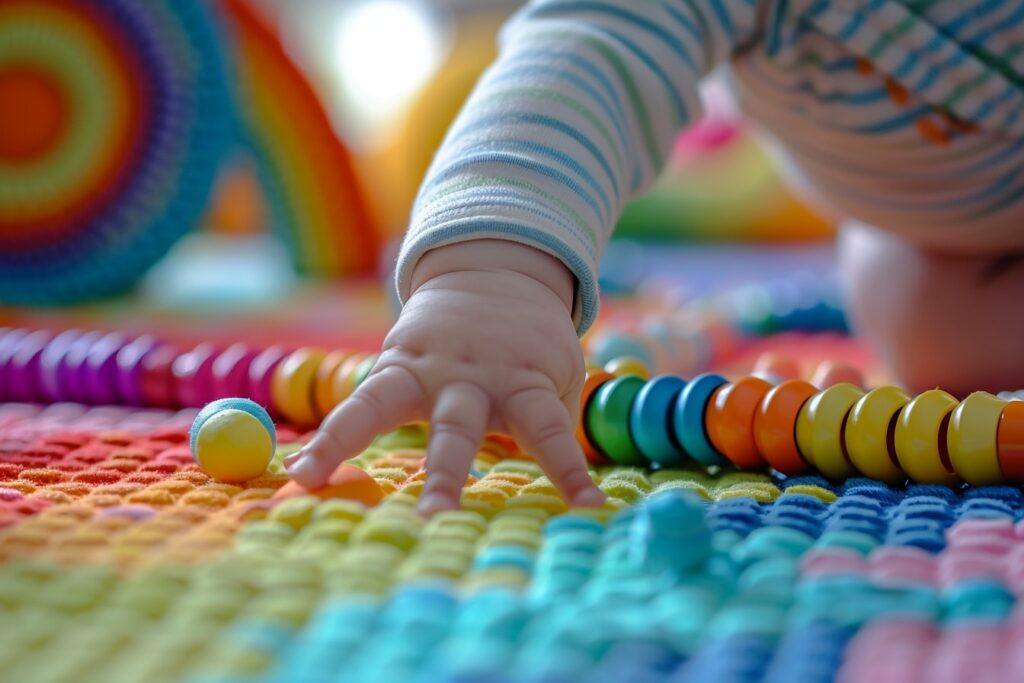Table of Contents
ToggleNurturing Little Tongues: Elevating Baby’s Language Skills through Montessori Activities
As a parent, have you ever marveled at the miraculous journey of language unfolding before your eyes? From those first adorable coos to the moment your little one utters their first word, every milestone in language development is a testament to the incredible capacity of the human mind. But as awe-inspiring as it may be, nurturing your baby’s language skills is no small feat. It requires patience, creativity, and a deep understanding of the intricate ways in which language evolves.
For me, the journey of supporting my baby’s language development has been both exhilarating and humbling. As a parent blogger with a passion for Caribbean culture, I’ve embarked on this linguistic adventure with a desire to infuse every syllable with the vibrant spirit of my heritage. From the rhythmic cadence of Caribbean lullabies to the colorful tapestry of storytelling woven into our cultural fabric, I’ve discovered endless opportunities to enrich my baby’s linguistic journey with the unique flavors of the Caribbean.
But why Montessori activities, you may wonder? Well, the Montessori approach offers a holistic framework for early childhood development that resonates deeply with my values as a parent. It emphasizes hands-on learning, independence, and respect for the child’s individual pace of development – principles that align perfectly with my desire to nurture my baby’s language skills in a supportive and nurturing environment.
In this article, we’ll explore how Montessori-inspired activities can serve as powerful tools in supporting your baby’s language development, enriching their linguistic journey with Caribbean cultural flair. From sensory-rich experiences that awaken their curiosity to language-rich environments that ignite their imagination, we’ll delve into practical strategies and heartfelt anecdotes that illuminate the path ahead.
So, whether you’re a seasoned parent seeking new ways to engage your little one in the wondrous world of language or a soon-to-be parent eagerly anticipating the joys of parenthood, join me on this enchanting voyage as we unlock the secrets of nurturing little tongues.
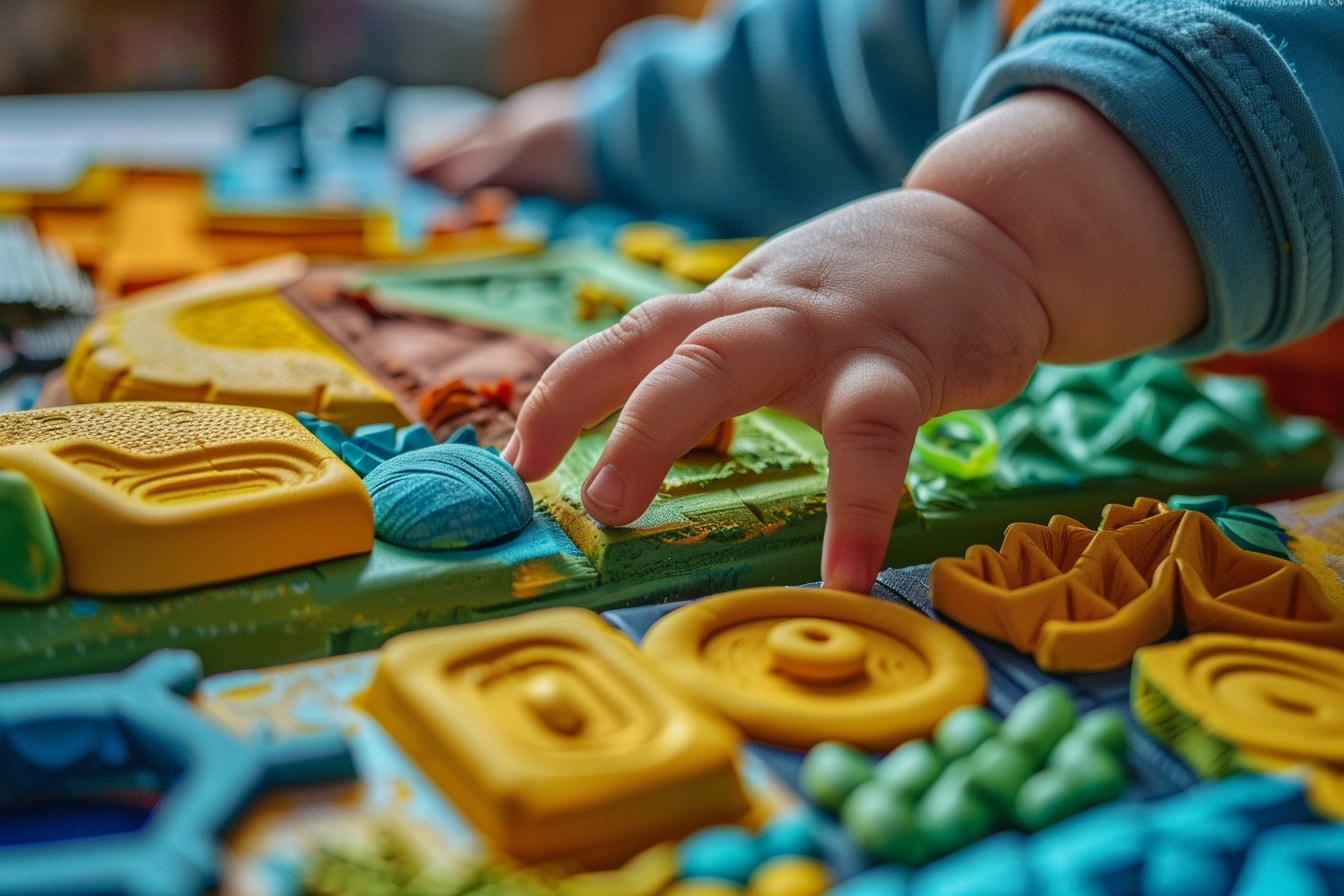
Unlocking Expression: The Role of Sensorial Exploration in Language
Picture this: your baby’s eyes widen in wonder as they reach out to touch the velvety texture of a rose petal, their tiny fingers exploring every ridge and crevice. In that moment, a world of sensory delights unfolds before them, laying the foundation for a rich tapestry of language and expression.
But what exactly is the connection between sensory exploration and language development? It turns out, it’s quite profound. From the earliest days of infancy, babies rely on their senses to make sense of the world around them. Each sight, sound, smell, taste, and touch sparks neural connections in their developing brains, shaping their understanding of language and communication.
According to Montessori philosophy, sensorial experiences play a pivotal role in laying the groundwork for language acquisition. By engaging in hands-on exploration of their environment, babies not only sharpen their sensory perception but also enhance their cognitive abilities, including memory, attention, and problem-solving skills – all of which are essential for language development.
So, how can we harness the power of sensorial exploration to unlock our baby’s expression? One approach is to create a sensory-rich environment that stimulates their senses and encourages curiosity. This can be as simple as filling a basket with objects of different textures, shapes, and sizes for your baby to explore with their hands and mouths.
- Choose a variety of objects with contrasting textures, such as smooth stones, fuzzy fabrics, and rough sandpaper.
- Encourage your baby to manipulate and explore each object, describing its characteristics in simple, descriptive language.
- Observe their reactions and respond attentively to their cues, reinforcing their discoveries with positive reinforcement and encouragement.
But sensorial exploration isn’t just limited to tactile experiences – it also encompasses a rich tapestry of sights, sounds, and smells that stimulate the senses in different ways. Take your baby on a sensory journey through nature, exploring the vibrant colors of flowers, the soothing sounds of birdsong, and the fresh scent of rain.
By immersing your baby in a world of sensory delights, you’re not only nurturing their curiosity and creativity but also laying the groundwork for a lifelong love of language and expression. So, let’s embark on this sensory adventure together and unlock the boundless potential of our little ones’ tongues.
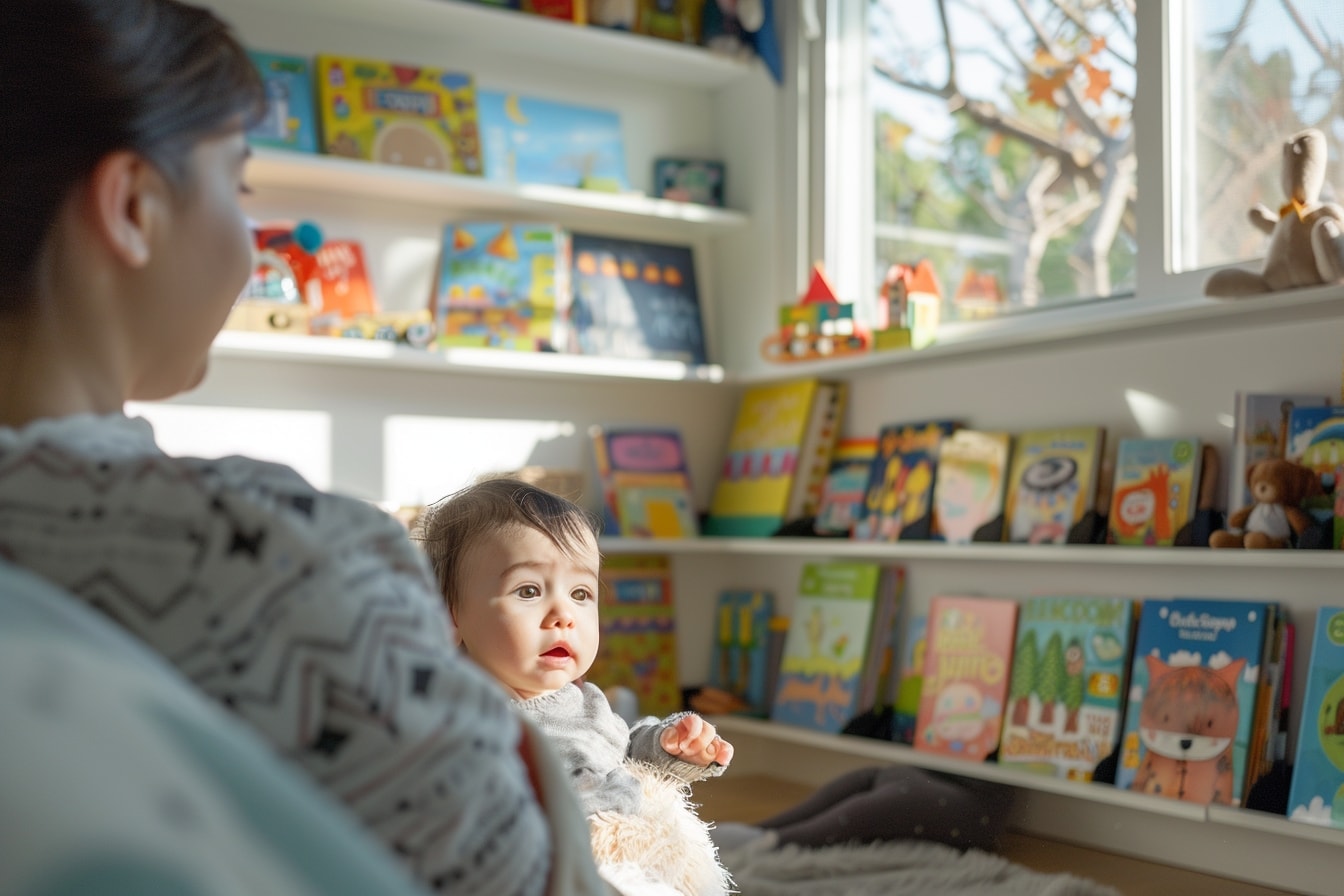
Building Vocabulary: Language-Rich Environments and Activities
Imagine a world where every object becomes a portal to a new word, every interaction a chance to expand your baby’s linguistic repertoire. That’s the magic of building vocabulary in a language-rich environment – a world where words come alive, and every conversation is an opportunity for discovery.
But what exactly does it mean to create a language-rich environment for your baby? It’s more than just surrounding them with books and flashcards (although those certainly have their place). It’s about infusing every moment of their day with language – from the moment they wake up to the time they drift off to sleep.
So, how can we create a language-rich environment that nurtures our baby’s burgeoning vocabulary? It starts with intentionality. From the labels we place on everyday objects to the conversations we have during mealtime, every interaction is an opportunity to introduce new words and concepts into our baby’s world.
- Labeling objects: Attach labels to common household items, such as chairs, tables, and toys, with both the English and Caribbean equivalents. This not only helps your baby learn the names of objects but also introduces them to the rich diversity of language.
- Reading aloud: Set aside dedicated time each day to read aloud to your baby, choosing books that feature colorful illustrations and engaging stories. Feel free to incorporate Caribbean-themed books that celebrate the culture and traditions of the region, exposing your baby to new words and cultural experiences.
- Exploring nature: Take your baby on outdoor adventures to explore the wonders of nature, using descriptive language to narrate your observations. Point out the colors of flowers, the sounds of birds, and the textures of leaves, inviting your baby to engage their senses and expand their vocabulary.
But building vocabulary isn’t just about bombarding your baby with words – it’s also about creating meaningful opportunities for them to use and practice their language skills. Encourage your baby to communicate through gestures, sounds, and eventually words, responding attentively to their attempts to express themselves.
As you immerse your baby in a language-rich environment filled with words, stories, and conversations, you’re not just laying the foundation for their linguistic development – you’re nurturing a lifelong love of language and learning. So, let’s embark on this journey together, one word at a time, and watch as our babies’ vocabularies blossom before our eyes.
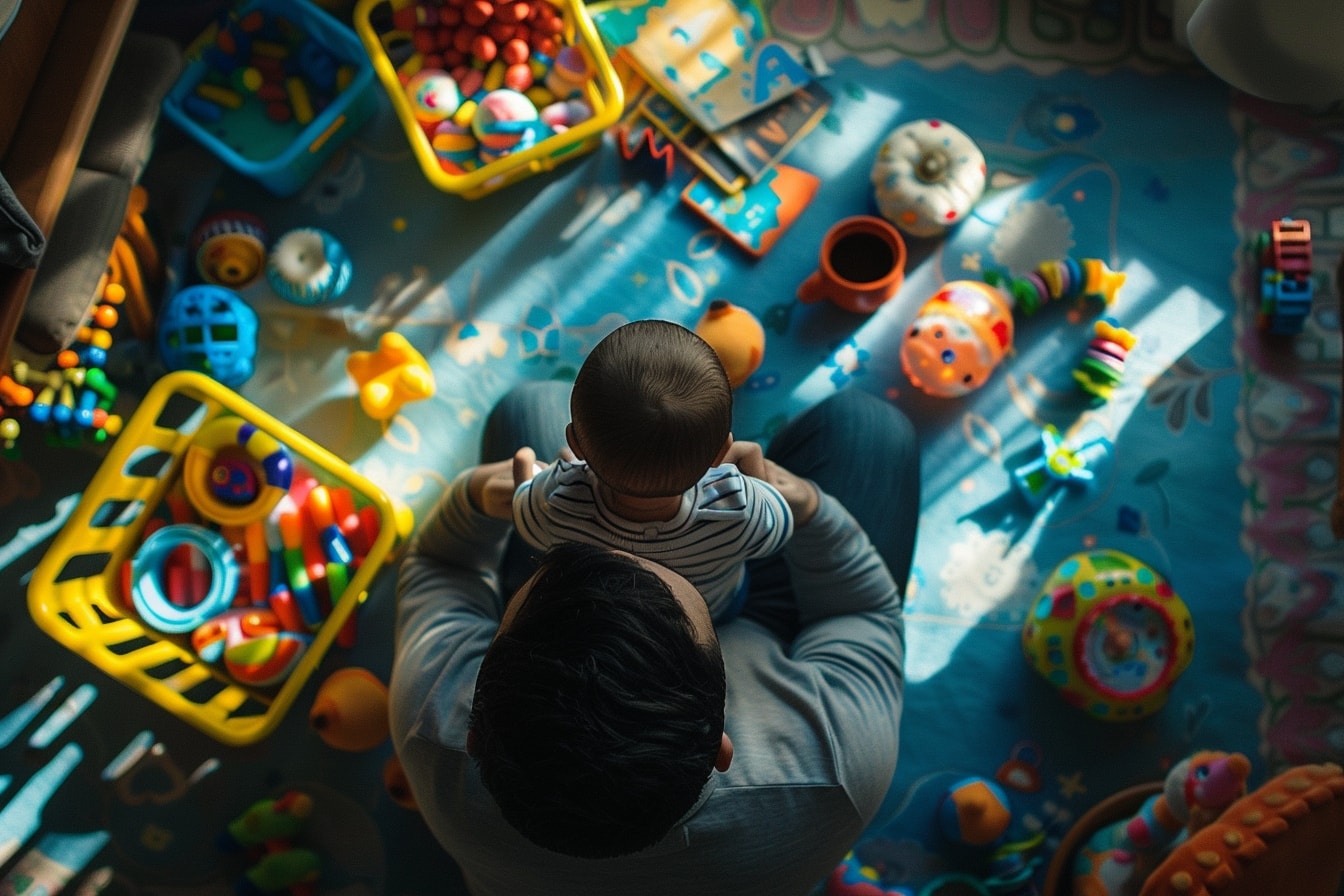
Fostering Communication: Encouraging Interaction and Engagement
Communication – it’s the heartbeat of every relationship, the bridge that connects us to one another in a tapestry of shared experiences and emotions. And when it comes to fostering communication with our babies, every interaction becomes an opportunity to nurture the seeds of connection and understanding.
But what does it mean to truly engage with our little ones in meaningful conversations? It’s more than just talking at them or reciting nursery rhymes (although those have their place too). It’s about creating a space where our babies feel seen, heard, and valued – where their attempts at communication are met with warmth and encouragement.
So, how can we foster communication with our babies in a way that honors their unique perspectives and abilities? It starts with being present – fully present – in each moment of interaction. Whether we’re changing diapers, feeding, or playing together, every interaction is an opportunity to engage our baby in a rich dialogue of gestures, sounds, and words.
- Active listening: Practice active listening during your interactions with your baby, tuning in to their cues and responding with empathy and understanding. Even if they’re not yet using words, they’re communicating in their own way – through smiles, cries, and gestures.
- Responsive communication: Respond attentively to your baby’s attempts at communication, whether it’s babbling, pointing, or making eye contact. Mirror their expressions and gestures, validating their efforts and building a sense of trust and connection.
- Encouraging conversation: Create opportunities for conversation during everyday activities, such as bath time, mealtime, and playtime. Ask open-ended questions, narrate your actions, and wait patiently for your baby’s response, giving them the space to express themselves in their own time.
But fostering communication with our babies isn’t just about talking – it’s also about listening. Pay attention to their nonverbal cues and emotional signals, responding with sensitivity and attunement to their needs and desires. By creating a supportive environment where our babies feel safe to express themselves, we’re laying the foundation for a lifetime of meaningful communication and connection.
So, let’s embrace the magic of conversation with our little ones, engaging in a rich dialogue of gestures, sounds, and words that celebrates the unique language of infancy. Together, let’s nurture the seeds of communication and understanding, fostering a bond that transcends words and lasts a lifetime.
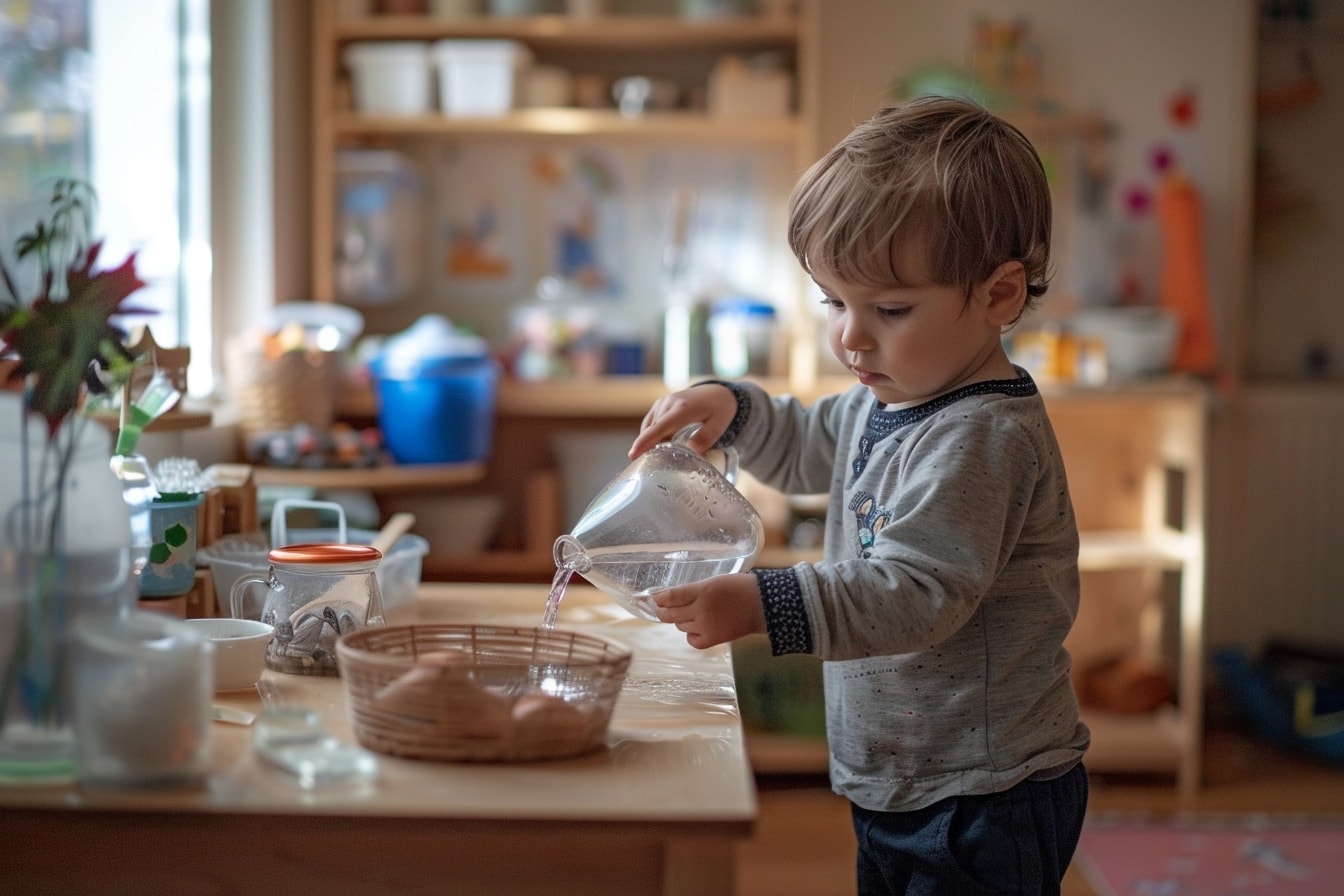
Cultivating Independence: Language Through Practical Life Activities
Picture this: your baby eagerly reaches for a spoon, their eyes sparkling with determination as they attempt to feed themselves. In that moment, they’re not just mastering a new skill – they’re cultivating independence and laying the groundwork for a lifetime of confidence and autonomy.
But what do practical life activities have to do with language development, you may wonder? Well, it turns out, quite a lot. According to Montessori philosophy, practical life activities not only foster independence and fine motor skills but also provide rich opportunities for language learning and expression.
So, how can we incorporate practical life activities into our baby’s daily routine in a way that promotes language development? It starts with creating a supportive environment that encourages exploration and discovery. Set up a designated area in your home where your baby can engage in hands-on activities that promote independence and self-sufficiency.
- Dressing: Encourage your baby to participate in the dressing process by providing them with clothing items that are easy to manipulate, such as pants with elastic waistbands or shirts with large buttons. Narrate each step of the dressing process, using simple, descriptive language to describe the clothing items and actions involved.
- Mealtime: Involve your baby in meal preparation and cleanup activities, such as stirring, pouring, and wiping down surfaces. Describe each step of the process using age-appropriate language, introducing vocabulary related to cooking and food preparation.
- Household chores: Assign simple tasks to your baby that allow them to contribute to household chores, such as sorting laundry, watering plants, or sweeping the floor with a child-sized broom. Use these activities as opportunities to introduce new words and concepts, reinforcing their language skills in a practical context.
But practical life activities aren’t just about teaching your baby how to perform everyday tasks – they’re also about instilling a sense of confidence and autonomy that will serve them well throughout their lives. By giving them the tools and opportunities to care for themselves and their environment, you’re empowering them to become active participants in their own learning and development.
So, let’s embrace the transformative power of practical life activities, fostering independence and language development in equal measure. Together, let’s nurture the seeds of confidence and competence that will blossom into a lifetime of self-reliance and success.
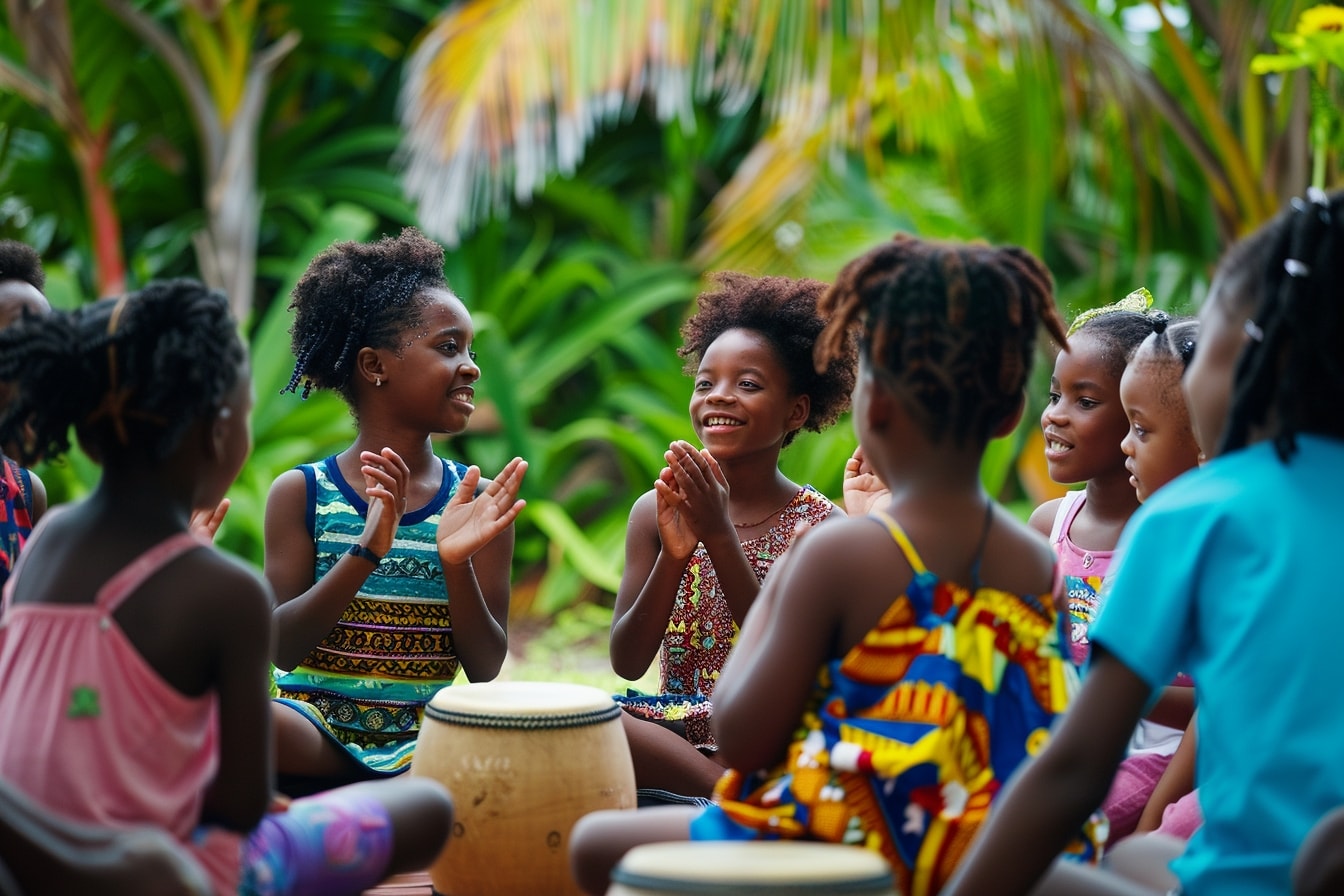
Connecting with Culture: Infusing Caribbean Flavors into Language Development
Let’s embark on a journey through the vibrant tapestry of Caribbean culture, where language isn’t just a means of communication – it’s a celebration of heritage, history, and identity. As parents, we have the unique opportunity to infuse our baby’s linguistic journey with the rich flavors of the Caribbean, creating a tapestry of words and experiences that reflect the diverse mosaic of our cultural heritage.
But why is it important to connect with our Caribbean culture in the context of language development? It’s about more than just preserving traditions – it’s about instilling a sense of pride and belonging in our children, grounding them in their cultural roots and empowering them to navigate the world with confidence and resilience.
So, how can we infuse Caribbean flavors into our baby’s language development in a way that celebrates our cultural heritage? It starts with embracing the diversity of languages, traditions, and storytelling practices that define the Caribbean experience.
- Singing traditional songs: Introduce your baby to the vibrant rhythms and melodies of Caribbean music by singing traditional songs and lullabies in languages such as Jamaican Patois, Haitian Creole, or Trinidadian English. Use simple, repetitive lyrics and gestures to engage their senses and encourage participation.
- Telling stories: Share folktales and legends from Caribbean folklore with your baby, using expressive language and vivid imagery to bring the stories to life. Choose stories that reflect the cultural diversity of the Caribbean, from tales of Anansi the Spider to legends of La Diablesse and Papa Bois.
- Exploring regional languages: Introduce your baby to the rich linguistic diversity of the Caribbean by exposing them to languages such as Spanish, French, Dutch, and indigenous languages like Taino and Carib. Use everyday phrases and expressions to incorporate these languages into your baby’s vocabulary, fostering a sense of appreciation for linguistic diversity.
But connecting with Caribbean culture isn’t just about language – it’s also about celebrating traditions, customs, and values that are unique to the region. Whether it’s celebrating Carnival, preparing traditional dishes, or participating in cultural festivals, find creative ways to immerse your baby in the sights, sounds, and flavors of the Caribbean.
By infusing your baby’s language development with the vibrant flavors of Caribbean culture, you’re not just teaching them words – you’re passing down a legacy of resilience, strength, and creativity that will enrich their lives for generations to come. So, let’s celebrate our Caribbean heritage and embrace the beauty of language as a bridge that connects us to our past, our present, and our future.
As we come to the end of our linguistic journey through the world of Montessori-inspired activities infused with Caribbean culture, I’m reminded of the boundless potential that lies within each and every one of us – parents and babies alike. Throughout this article, we’ve explored the transformative power of language, the joy of sensory exploration, and the magic of connection that binds us together as a community.
But our journey doesn’t end here – it’s only just beginning. As parents, we have the privilege and responsibility to nurture our baby’s language development with love, intentionality, and a deep appreciation for the rich tapestry of our Caribbean heritage. By infusing their linguistic journey with the vibrant flavors of our culture, we’re not just teaching them words – we’re passing down a legacy of resilience, strength, and creativity that will shape their identity and enrich their lives for years to come.
So, let’s continue to embrace the magic of Montessori-inspired activities, creating language-rich environments that spark curiosity, ignite imagination, and foster meaningful connections with our little ones. Let’s celebrate the beauty of language as a bridge that connects us to our past, our present, and our future – a bridge that transcends borders and unites us in a shared journey of discovery and growth.
As we bid farewell to this article, I invite you to carry the lessons and insights shared here into your everyday interactions with your baby, infusing their world with the warmth, vibrancy, and love of Caribbean culture. Together, let’s embark on this enchanting voyage of language and discovery, embracing the beauty of diversity and celebrating the unique voices that make our world a brighter, richer place.
Want to take your knowledge to the next level? Check out these must-read articles:
- How to introduce solid foods to your baby using Montessori principles
- How to involve your baby in daily tasks and routines with Montessori
Organize your baby’s wardrobe with our baby clothes closet organizer products! Our organizers are designed specifically for baby clothes. Get your baby’s clothes neat and tidy with our selection of organizers – shop now!
Step into Sue Brown's World of Baby Care, where you'll find a treasure trove of knowledge and wisdom waiting to be explored. Sue's dedication to providing accurate and up-to-date information on baby care shines through in every article, blog post, and resource she shares. From newborn essentials to sleep training tips, breastfeeding advice to nurturing your baby's development, Sue covers a wide range of topics that are essential for every parent to know. Her warm and compassionate approach creates a sense of community and reassurance, making her website a safe haven for parents seeking guidance and support. Let Sue Brown be your partner in this beautiful journey of parenthood, as she empowers you to create a loving, nurturing, and thriving environment for your little one.
- Indoor Air Quality for Infant Respiratory Health - October 20, 2025
- Positive Discipline Foundations: Setting the Stage From Infancy - October 18, 2025
- 2025’s Most Innovative Baby Products Worth the Investment - October 16, 2025
Other Great Posts:
- How to use games and activities to promote a growth mindset in your baby, such as puzzles, building blocks, and memory cards
- Positive Reinforcement in Babyhood: Encouraging a CanDo Attitude
- Traveling with Baby: Adventures in Growth and Exploration
- Growth Mindset vs. Fixed Mindset: RealLife Stories and Examples

